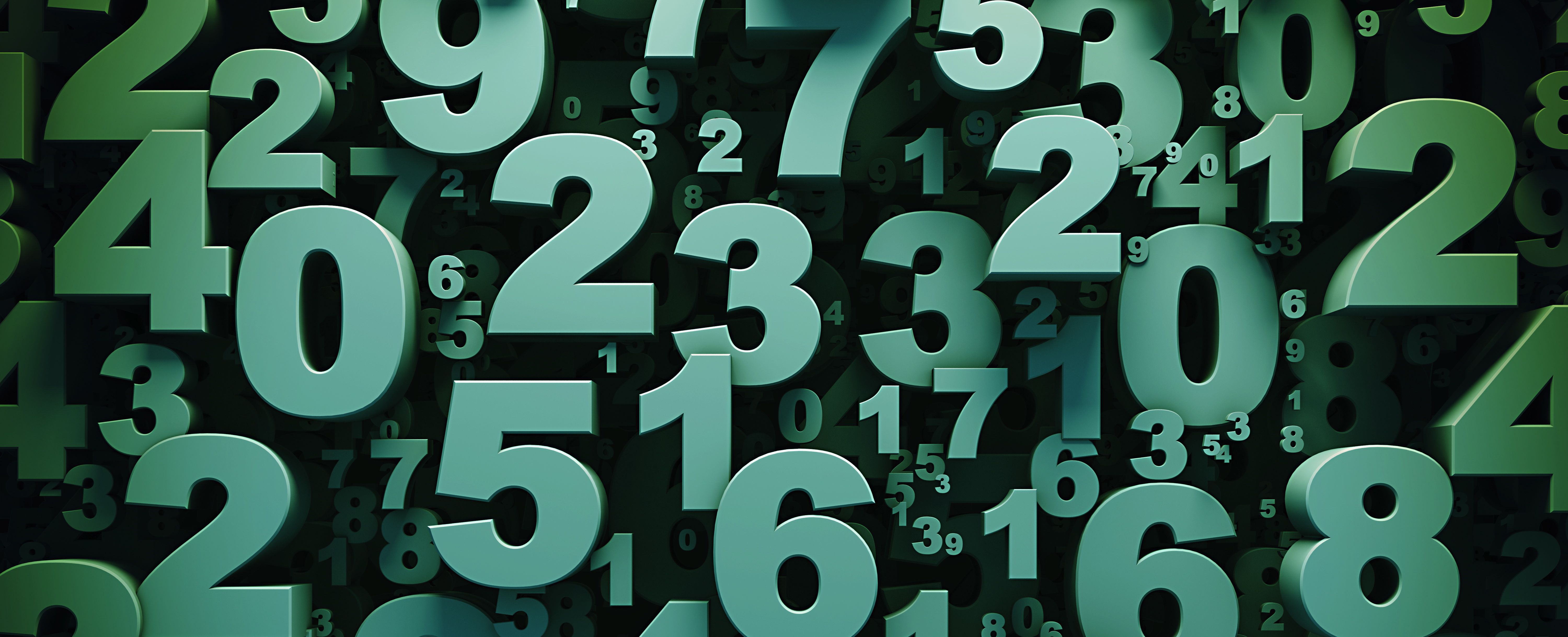PEDAGOGIC INNOVATION
For many students Mathematics is a subject to be feared but will a constructive and sensitive approach to the discipline help make the discipline suitable to the needs of various students?
Joyita Banerjee is working in the field of education from last 12 years . She is also associated with Azim Premji University contributing towards educational asessment. Her areas of interest include sociology of mathematics education, classroom based assessment and professional development of teachers.
We live in a stratified society in which inequalities on the basis of caste, tribe, class, and gender are predominant. It is expected that ideally education should lead to a just and equitable society by minimizing these inequalities but it has been noted that education on most occasions perpetuates the existing inequalities in the society in a very subtle fashion. Students hailing from the socially, culturally and economically disadvantaged section often find themselves discriminated within the school system.
Inadequate representation of the culture and context of such students in school curriculum leads to lack of motivation which may eventually compel them to drop out of the school system. In this context, one of the school subjects which is a major cause of failure and drop out is Mathematics. It is the cause of fear and anxiety among many students and is often seen as a subject mastered only by the so called ‘intelligent’ students.
In this article, I have tried to highlight the issues in mathematics education that make it a means of social stratification and have suggested probable approaches to make the subject enjoyable for all students.
Current context of mathematics education and its impact on society
Mathematics plays the role of a gatekeeper in the society as it is considered to filter students for higher education and lucrative careers in the field of science, engineering and technology thus leading to upward social mobility. High achievement in mathematics and other related subjects is often seen as an indicator of being academically sound. Thus along with the existing inequalities in the society, the subject further creates a demarcation between those who can and those who cannot do mathematics.
Besides its utilitarian benefits, it is one of the subjects which help in developing rational and logical thinking that enable an individual to solve innumerable problems encountered in daily life. Hence it is pertinent from the perspective of social justice that all students irrespective of their caste, class, gender, ethnicity, learning styles should develop such skills through mathematics education. NCTM (2000) Principles and Standards for School Mathematics sees mathematics as a core component of intelligent decision making in everyday life, in the workplace and in democratic society and also advocates for Mathematics proficiency among students from different socioeconomic, linguistic and cultural groups. However, the ground reality establishes the fact that quality mathematics education is in the purview of a select few across the world. Failure and poor achievement in mathematics often strongly correlates with the socio economic status and parental background of students.
Data from Third International Mathematics and Science (TIMMS) indicate that socio-economic status correlates with performance. Even the mathematics scores on the Scholastic Aptitude Test (SAT) also correlate with parental income (Schoenfeld, 2002).
The fear of failure in Mathematics is a critical issue in India too. The high failure rates in Board Examinations in Mathematics is also recognized as an important issue in Mathematics education by the National Focus Group’s Position Paper on Teaching of Mathematics. representation of women and members belonging to other minorities such as SC/ST communities in Mathematics intensive field in higher education, is fairly low.
To make matters worse, many Boards of Secondary Education in our country have taken a regressive move by considering the decision to make Mathematics an optional subject. As if this is not enough, Uttarakhand Board of Secondary Education gives opportunities to girls to opt for Home Science instead of Mathematics. The assumptions behind such actions really need to be deliberated and debated upon. Often teacher’s belief about students’ capabilities based on their social orientation impedes further learning of the subject. I recently came across a shocking experience while interacting with a government school teacher about children’s learning of Mathematics. The teacher narrates, “These children (referring to a few) come from backward caste, with no parental education. What they are doing is enough, even if you try; they cannot understand complex mathematics problems or learn more than this.” Thus the subject becomes out of reach for many not only because of the inherent difficulty in the subject but due to a perception that not everyone can learn Mathematics.
Thus the current scenario calls for a greater engagement and deeper understanding of the critical issues in Mathematics education and evolve ways to make mathematics learning inclusive.
Key issues in school Mathematics
One of the critical issues that confront Mathematics education is undue importance given to facts and procedure instead of emphasizing on the conceptual understanding. Let me reiterate with an example. When in primary grades children are taught multiplication, lot of emphasis is given on rote memorization of multiplication tables. They are seldom asked if they can construct the multiplication table of 5 using the tables of 2 and 3. Even when children move from single digit multiplication to double digit multiplication, many children are clueless why zero or a cross appears when the digit in the ten’s place in the multiplier is multiplied with the multiplicand. Even many children are seen to just multiply the digits without even considering the place value as illustrated in the examples below.

The issue here is multiplication algorithm is taught as a procedure on most occasions without even emphasizing the concept behind the procedure.
Hence instead of making the children rote memorize the procedures, if it is shown to the children how the algorithm of multiplication works, the concept will become easy to comprehend. So much of emphasis is given to the product or the final result that the process of solving a problem is compromised.
A particular problem can be solved by multiple approaches. However a common classroom culture is to appreciate a single method which the teacher finds suitable and the approaches used by different students are not even considered. The overemphasis on a single right answer often creates anxiety among the students. I have observed on many occasions that students show greater interest and participation when they are asked to explain their process of solving the problems. The best part is that a sense of accomplishment is developed when they discover that all the approaches lead to the same answer and no approach is ‘bad’.
While it is true that that the nature of Mathematics is abstract, however the initial experience as emphasized by NCF should be concrete and contextual. However, in actual practice it is often seen that the context of the child is not considered in the classroom. The examples used in the text books or by the teachers are often alien to the students coming from diverse backgrounds. For instance, providing the example of a pizza to explain fraction will complicate the topic for a child in a remote village who has never seen a pizza.
Many times children falter in working out the procedures of number operations. However these same children calculate using their own methods of mental mathematics very easily when a familiar context is provided. Valuing these approaches in the classroom is bound to create a positive impact on learning. Not only discussions on these folk methods will make the children feel valued, these will also enrich classroom discussions where students’ get exposed to each other’s method of solving and become familiar with multiple methods to solve problems.
Another issue that causes a hindrance to achievement in Mathematics is the language of Mathematics. Many words used in Mathematics such as face, base, whole, volume have different meanings within a non-mathematical context and hence there always remains a danger of associating incorrect meanings with these words (Zeverbergen, 2001).
Thus failure to bridge the language gap because of varied background, is believed to be a failure in Mathematics and often this is how students speaking different languages at home are excluded. Teachers of Mathematics would also agree that students face a major challenge in solving word problems. Often it has been observed that when the problem is explained in simple language, they are able to solve the problem. Usage of unfamiliar words and contexts of word problems make the task of problem solving even more challenging. Thus what is seen as an issue with Mathematical achievement turns out to be a linguistic issue. Hence teachers should try to explain the problems in simple language and be sensitive and patient towards students hailing from varied linguistic backgrounds especially in the primary years of schooling.
So far in this article I have illustrated the reasons which make Mathematics difficult and unapproachable by the majority of students. However, one needs to be cognizant of the fact that though little in number there exist in every classroom, students who need to be constantly challenged. Otherwise the subject might lose its relevance for them. Burdening such students with a number of procedural sums often makes them lose interest in the subject. Hence it is equally important for Mathematics teachers to provide challenging tasks, to use differentiated questions and open ended questions to engage all students. The beauty of open ended questions is that no answer is right or wrong, every response is valued and through sharing of responses in the classroom, students get exposed to range of answers and thus their thinking is widened. Some of the examples of open ended questions could be
Create a contextual problem which can be solved by the statement 35 x 5 = 175
Give examples of shapes with same area but different perimeter
What are the possible combinations of the number 12?
Way Forward
Thus in order to ensure that a subject as important as Mathematics does not remain in the custody of a select few, there is a need for a coherent curriculum and highly skilled and sensitive teachers to transact the same. The curriculum should focus on Mathematical thinking, problem solving and Mathematical communication. Adequate representation of the language, culture and context of the students must be considered an integral part of the curriculum and the pedagogical practices should reflect the same. Linking procedural knowledge with conceptual knowledge, appreciating multiplicity of approaches should form the essence of Mathematics classrooms. In order to translate these into practice, the critical role of teachers and teacher educators is called for. The professional development of teachers needs to emphasize not only on their content knowledge but also on the pedagogical practices that foster equity in Mathematics classrooms. The student-teachers need to be sensitized towards the needs of the children from varying backgrounds, providing for the learning experience of meaningful Mathematics so that all children see the relevance of their learning.
References:
NCERT (2006).National Focus Group, Position Paper on Teaching of Mathematics, New Delhi
NCTM (2000).The Principles and Standards for School Mathematics of the National Council of Teachers of Mathematics
Schoenfeld, A. H (2002) Making mathematics work for all children: Issues of standards testing and equity, Educational Researcher, Vol 31. No1, pp. 13-25
Zevenbergen R (2001) Language, Social class and underachievement in school mathematics in P Gates (ed.) Issues in mathematics teaching. Routledge
http://ubse.uk.gov.in/files/SUBJECT_COMBINATION_G.O..pdf
***










